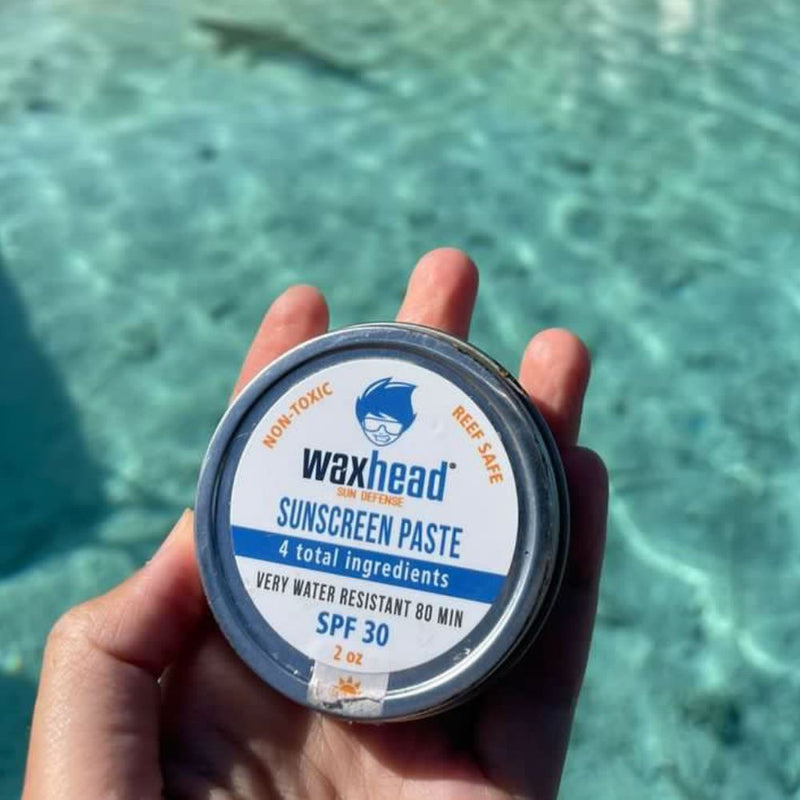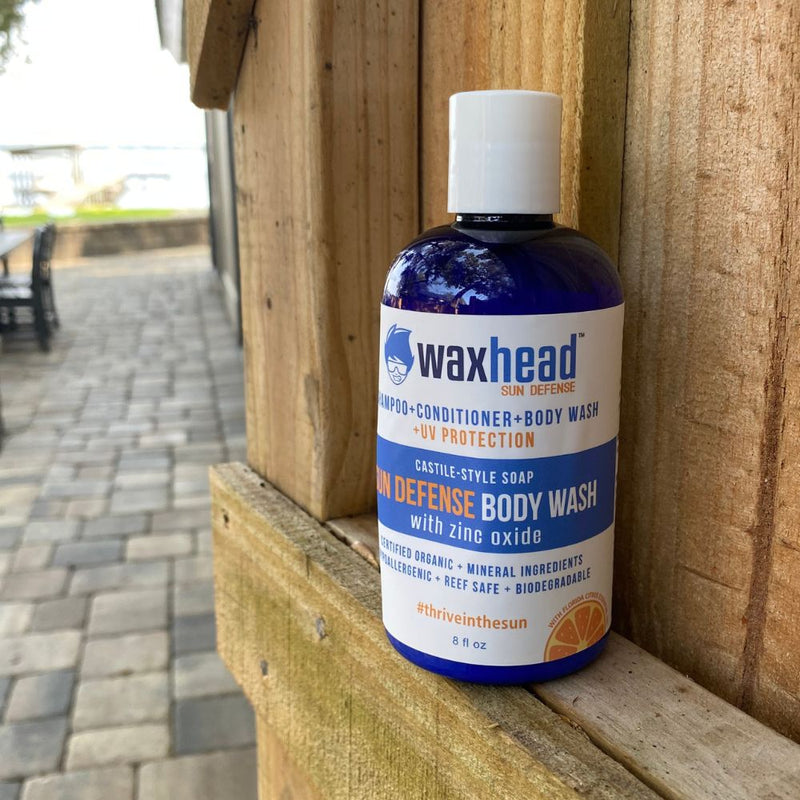Let’s explore the world of sunscreens, explicitly focusing on the ingredient zinc oxide. The crux of the discussion is: How much zinc oxide should a sunscreen have? Let's unravel this sunscreen problem and make more informed decisions about our skincare products.
Unveiling Zinc Oxide Sunscreen
Zinc oxide is a white, powdery mineral used in skincare for over a millennium. It's a primary component in mineral sunscreens, also known as physical sunscreens. Zinc oxide works as a physical barrier between your skin and the sun, reflecting and absorbing harmful UVA and UVB rays, thus preventing them from penetrating your skin.
A Glimpse at History: Zinc Oxide in Skincare
Historically, zinc oxide's healing properties were used in wound care, likely due to its antimicrobial activity. Its role in sun protection came much later. Notably, zinc oxide debuted as a sunscreen component in the 1940s. Today, we recognize it as a safe and effective physical sunscreen for all skin types, including sensitive and baby skin.
Deciphering the Numbers: If My Sunscreen Has 5% Zinc Oxide
When you encounter a sunscreen with 5% zinc oxide, it generally means it has a lower level of sun protection. Lower zinc oxide concentrations are less effective at blocking a broad spectrum of UVA and UVB rays. However, these formulations can be smoother and less visible on the skin, a common reason people prefer them.
Moving Up: If My Sunscreen Has 10% Zinc Oxide
A sunscreen with 10% zinc oxide offers medium-level sun protection. It provides a better shield against UVA and UVB rays than a 5% formulation and is less likely to leave a white cast on the skin than higher concentrations. A 10% zinc oxide sunscreen for most daily activities can balance protection and aesthetics well.
Going All-Out: If My Sunscreen Has 25% Zinc Oxide
If your sunscreen contains 25% zinc oxide, that's a high-concentration sunscreen! This potent formulation offers robust protection against a broad spectrum of UVA and UVB rays. However, it can leave a noticeable white cast on the skin. 25% might be your best option for intense sun exposure, such as beach days or high-altitude hiking.
What SPF does a Sunscreen with 25% Zinc Oxide Have?
A sunscreen with a high concentration of Zinc Oxide 25% typically has a high SPF, possibly over 30 or 50. However, it's important to remember a higher SPF only sometimes means much better protection. SPF 30 blocks about 97% of UVB rays, while SPF 50 blocks about 98%.
No sunscreen can block 100% of the sun's rays, and sunscreens should not be your only defense against sun damage. Other measures like wearing protective clothing and seeking shade when the sun is at its highest are also necessary.
For the most accurate information, always check the SPF stated on the product label and make sure it is broad-spectrum, meaning it protects against UVA and UVB rays.
Legal Considerations: Zinc Oxide in Sunscreen
Regulations vary by country, but in the US, the Food and Drug Administration (FDA) classifies zinc oxide as a safe and effective sunscreen ingredient up to a concentration of 25%. It's important to note that this doesn't equate to a 25% sun protection factor (SPF); instead, it's the maximum permitted concentration of zinc oxide in a product.
Distinguishing Between Non-nano Zinc Oxide and Zinc Oxide
Non-nano zinc oxide is zinc oxide that hasn't been reduced to nanoparticle size. It offers better sun protection as its nano counterpart and is less likely to penetrate the skin. This makes non-nano zinc oxide sunscreens a better option for people with sensitive skin and a safer environmental choice, as nanoparticles can harm aquatic life.
The Mineral Advantage: Why Choose Mineral Sunscreens?
Mineral sunscreens, with active ingredients like zinc oxide, protect your skin by physically blocking the sun's rays. In contrast, chemical sunscreens absorb the sun's rays and can introduce potentially harmful ingredients into your body and the environment. Non-nano zinc oxide sunscreens are gentler on the skin and more eco-friendly, making them an excellent choice for health-conscious individuals and outdoor enthusiasts.
Who Benefits From Mineral Sunscreens?
Mineral sunscreens benefit everyone but are particularly great for people with sensitive skin, babies, children, and those conscious of their environmental footprint.
FAQs on Zinc Oxide Sunscreen
Q: How much zinc oxide should a sunscreen have for adequate protection?
A: It varies, but a concentration between 15-25% usually offers a good balance of sun protection and skin feel.
Q: What are the benefits of using sunscreen with zinc oxide?
A: Zinc oxide provides broad-spectrum protection against both UVA and UVB rays. It's a physical blocker, which means it sits on top of your skin and reflects the sun's rays. It's also less likely to cause skin irritation and is generally safe for all skin types, including sensitive and baby skin.
Q: Are there any disadvantages to using zinc oxide sunscreen?
A: One common complaint about zinc oxide sunscreen is that it can leave a white residue on the skin, especially at higher concentrations. However, many brands, including Waxhead Sunscreen, have found ways to formulate their products to minimize this effect by offering tinted sunscreens.
Q: Is non-nano zinc oxide sunscreen safe for the environment?
A: Yes! Non-nano zinc oxide is "reef-safe," meaning it doesn't harm coral reefs and other marine life. This is an essential consideration for health-conscious outdoor enthusiasts who care about their impact on the environment.
Q: Can I use zinc oxide sunscreen on my baby or toddler?
A: Absolutely. Zinc oxide is one of the safest active ingredients for sunscreens used on babies and toddlers. It's a physical blocker, which means it's less likely to cause skin irritation than chemical sunscreens. Always check with your pediatrician if you have concerns.
Q: How often should I reapply zinc oxide sunscreen?
A: As a rule, you should reapply sunscreen every two hours immediately after swimming, sweating, or towel drying. This applies to all sunscreens, not just those containing zinc oxide.
Q: How much zinc oxide should a sunscreen be considered "broad spectrum"?
A: Sunscreens are considered a "broad spectrum" if they protect against UVA and UVB rays. Zinc oxide is one of the few active ingredients that does this. While there isn't a definitive percentage that guarantees broad-spectrum protection, a concentration of at least 20% is generally a good benchmark.
Conclusion
In conclusion, the question, "How much zinc oxide should a sunscreen have?" depends on your needs. If you're looking for a safe, effective, and eco-friendly option, we recommend Waxhead Sunscreen. It's packed with non-nano zinc oxide, providing excellent sun protection while being kind to your skin and our planet.




























